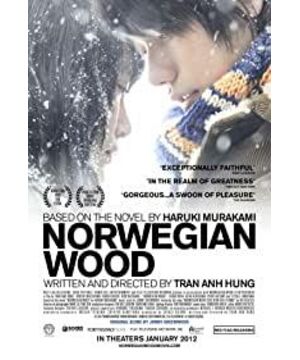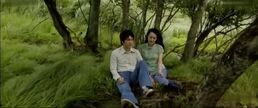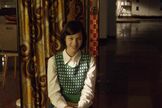Haruki Murakami and the Cinematization of His Novels
In fact, no matter the expectations before watching the film or the complaints after watching the film, it is nothing more than a reaction of Murakami readers. I have not yet reached the realm of "village", and I have only read ten books in Murakami. There are 8 kinds of movies based on Murakami's novels. In addition to [Norwegian Forest], there are Kazuki Omori's [Listen to the Wind Sing] (1981), Yamakawa Naoto's [Assault on the Bakery] (1982) and [Meet 100%] The Girl] (1983), Keiichi Nomura's [The Side of the Forest] (1988), Wolf Baschung's [The Bakery Again] (1998), Jun Ichikawa's [Tony Waterfall] (2004), Robert Logevall of [God's Children All Dancing] (2007). Two of the films made by "foreigners" have never been seen before, and the names and other works are also very unfamiliar; Keiichi Nomura's film has seen one [Ozu no Autumn], which is a relatively boring art film. I checked the information. It was found that he had just passed away in March this year, and only 4 works in his life. Among the few films I have seen, the two experimental short films by Naoto Yamakawa have the most flavor of the original Murakami. This little homework itself shows two problems. First, Haruki Murakami made his debut in 1979 with the novella [Listen to the Wind], and his famous work was made into a film in 1981. In the following three decades, Murakami's famous work Constantly, but only these novels, which were not so important in his creation, were filmed, and only [Norwegian Woods] were adapted from Murakami's novels, suggesting that adaptations of Murakami's (especially important novels) ) is not easy. Second, among these films, the works shot according to the conventional film technique are not as good as the avant-garde works. The charm of Murakami lies in his literary language, the dialogue can still be made into a film, and the large psychological descriptions and his signature subtle metaphors , the possibility of visualization is not impossible, but it is very difficult. One feature is that in the adaptation of Haruki Murakami's works, if the director respects the original work, he has to use narration to quote the original text (such as [Listen to the wind]), or use narration to lead the narrative (such as Yamakawa Naoto's). two short films). [Tony Watertani] tried to find another way to focus on the visual presentation of Murakami's characters, but the response was mediocre.
Therefore, it is risky to adapt Murakami, and it is easy for readers not to buy it. This is also an important reason why Murakami's long-form works have not been made into films. On the other hand, from the perspective of film alone, Murakami's works are not very suitable for conventional commercial film operations, regardless of the plot or characters, because the characters in his works always lack emotional intensity, never feel sad or happy, living in In the world of their own, to outsiders, they are often some kind of "freak"; but at the same time, they have a very rich heart, high literary and artistic accomplishment, and they are not good at words on the surface, but in fact they are often amazing. Such a character image, if not well grasped, will be photographed as "shy". It should be noted that what Murakami wrote is not this type of character image that has been stereotyped. They do not communicate with people because they lack ability or lack of desire, but because they lack demand. , In modern society, you can live well without (actively) communicating with people.
This is an important feature of the modernity of Murakami's novels. In China, Murakami has become a classic of petty bourgeoisie and one of the two major writers (the other is Duras) who have been "scourged" by small freshmen. I am afraid this is also an important reason. On the other hand, the sexual descriptions in Murakami's works provide a way of "voyeurism", which is also an important reason why "Norwegian Wood" rather than "The End of the World and Grim Wonderland" has become Murakami's masterpiece. This book was published in 1987, and the first mainland Chinese translation was published in 1990, titled "Norwegian Forest: Farewell to the Virgin World" (Translators: Zhong Hongjie, Ma Shuzhen, Northern Literature and Art Publishing House), from the cover, it is a complete book erotic novels. Since then, Lin Shaohua's translation has been widely used in mainland China, and has been republished many times. It has also become Murakami's best-selling work in China. The reading of the "village" probably originated from this novel. Of course, there is also a big pit for the genealogy of petty bourgeoisie culture and the spread of Internet culture. In short, "Norwegian Forest" is more from a "yellow book" "It has gradually become a classic, and in the reading and discussion of it, those "critical" sexual descriptions that provide great reading pleasure can only be entertained, while the "Murakami Blues" that can be put on the table are faint The sadness and so on, the process of discourse construction is very rich and complex.
Chen Yingxiong and [Norwegian Forest]
French-Vietnamese director Chen Yingxiong has been famous for a long time. [The Taste of Green Papaya] and [Tricycle Driver] are both masterpieces. The latter has also become one of the works that domestic fans talk about because of Tony Leung and the Golden Lion Award. Similar to Bauer Toni, what he presents in his films is a typical orientalized Vietnam, which will not be discussed much. And his famous stunt is the "poetic editing" in the movie, such as the monologue paragraph of the "poet" Tony Leung in [Tricycle Driver]. Visual presentation, in fact, this is a very full "cinematic" (cinematic) method. The discussion of Chen Yingxiong mostly focuses on his Vietnamese identity and the presentation of his films. Since 2000 [Smell of Summer], Chen Yingxiong has been silent for several years, and it was not until 2008 that [With the Rain] came out. As for this adaptation [Norwegian Forest], it is said that Murakami personally chose him to direct. As a result
, there are two main criticisms of Chen Yingxiong's version of [Norwegian Forest]. One is the complete failure of the play. The film critic Bo Qiao believes that the film is "the selling point of a commercial film, the theme of a pure love film, the editing of an art film, the music of an experimental film, and the cast of Southeast Asian looks, which should be lost. The script adaptation that should be lost...", the film not only greatly deleted the scenes of Ryoko, Reiko, Nagasawa and the Expendables, but the most critical problem is that the beginnings and transitions in the novel are deleted, which makes many lines lack contextual connection and appear to be baffling. The same is true in the handling of some plots. If there were no two long talks and many correspondence between Reiko and Watanabe, the last sex scene would seem absurd and absurd; The emotions formed, Midori looks like a willful little girl movie. At the same time, Chen Yingxiong treated Naoko as a typical "crazy woman", roaring loudly three times in the film, and burst into tears at every turn, please, what Murakami's characters lack most is emotional intensity, the logic of the text is not like this at all... …
Another criticism focused on the mood of the film. Many viewers think that this film made Japan into a "sweet Vietnam". Although it was raining on Naoko's birthday and when Watanabe visited Naoko for the first time, Watanabe in the book visited Midori for the first time. At the time, the two were watching the fire together, and this scene also became a rain scene in the film. At the end, Reiko visits, the original book does not explain the weather, and of course the film is also filmed as a rain scene. In fact, Naoko committed suicide in the summer, and Reiko's visit was in the fall. In order to make the film more compact, the ending was moved to the winter of the previous year. In this way, the meaning of Watanabe's move out of the dormitory to rent a house has changed... The above is still the problem of the drama. In fact, the rain scene is obviously more troublesome in comparison. Although Chen Yingxiong is not afraid of trouble, he The audience couldn't help but not appreciate it. At this point, I think many of Chen Yingxiong's treatments are still good, rain and snow scenes (I feel that they refer to [Love Letter] to a large extent, and there are also claims that this film by Iwai Shunji was originally written by "Norwegian" The inspiration from "Forest") was well filmed. The first time Watanabe visited Naoko, and the cloudy sky and strong wind in the scene of Watanabe's healing trip (changed to winter) are all highly cinematic performances. The sexual element, in other words, is the externalization of the character's inner emotions. At this point, photographer Li Pingbin contributed greatly.
As far as the audio-visual language of the whole film is concerned, there are many motion shots, and some indoor motion shots are quite capable of scheduling, and long follow-up shots and movements are often seen. The scene with Naoko in the early morning of Watanabe's first visit to Ameliao was a long shot to the end, requiring high positioning and performance. The scene of the sanatorium, which is the highlight, is very particular about the selection and shooting. Most of the panoramic shots are large areas of oppressive green, or large areas of dazzling white snow. In the editing, you can also see Chen Yingxiong's signature "poetic editing", which is basically concentrated in the second half hour, when Watanabe learns about Naoko's death, and Watanabe's healing journey is relatively obvious. It is edited from shorter fixed shots. Express the psychology of the character. In terms of music, the first half of the film is dominated by guitars, while the second half has a lot of string music—in my opinion, the music of the film adapted from Murakami’s works should obviously use jazz... This does not explain it, Omori Kazuki’s [and Listen to the wind] doing better.
1968 by accident
The first time I read "Norwegian Wood" was in 1998. At that time, I was still in junior high school. I read it again when I was just in college. When I read it again, I found that the story happened in 1968. Well, students from all over the world When the movement was surging, Watanabe, the protagonist of Murakami, did not care about politics and had a cynical attitude towards life. But I find that it still cannot be viewed as a depoliticized expression. The main theme of the book is to mourn the death. Watanabe and Naoko have to face the huge shadow caused by Kiyuki's suicide, Midori has to face the successive deaths of their parents, Reiko faces the loss of her musical ability, and of course Watanabe has to face Suicide of Naoko. Through the process of mourning the death, what is accomplished is healing: although Naoko finally committed suicide, Watanabe and Reiko were relieved after singing fifty-one songs for Naoko, Reiko returned to society, and Watanabe finally let go of Naoko , From keeping a close eye on Naoko, to finally deciding to talk to Midori. This is a typical way of writing 1968. After the self-destructive self-defeating, the protagonist finally has to continue to live - but the ending of the novel is very meaningful. Midori asked: "Where are you?" Watanabe suddenly couldn't find it. To my place - this is the profound confusion and loss after 1968. Murakami's attitude here is still ambiguous. Although it seems that the novel uses Watanabe's cynical personal experience to dissolve historical narratives, in fact, this is a process of encountering and healing historical wounds, whether it is past events. Still reality.
In fact, this is the consistent theme of Murakami. I don't know why, Chen Yingying missed out in the narration, or deliberately ignored the phrase "Death is not the opposite of life, but a part of life," which was repeatedly emphasized by Murakami. The pain and debt of history continue to survive.
Perhaps in the novel, 1968 is not so conspicuous. When I read this novel when I was a teenager, I would not even notice the meaning of this year. But in the movie, this element is emphasized at the beginning. At this point, the power of images makes this historical background suddenly develop. In 1987, during the last period of the Cold War, Murakami wrote this somewhat "private novel" story in a reminiscence way. The hero spared no effort to film these scenes one by one, but in this post-revolutionary era, it has become a bit abrupt. This is also the reason why the film did not become a pure love drama in the end. What the audience wants to see is just a smooth sensational story; and what the readers expect is to properly shoot the original work, with some narration appropriately reserved for them to recall the words and phrases. But the problem is that even if the film was shot in 1968, it was just a few scenes, and no more excavation was done at all. And more importantly, who cares what happened in 1968?
This article is featured in the April 2011 issue of Watch Movie Midnight
View more about Norwegian Wood reviews











